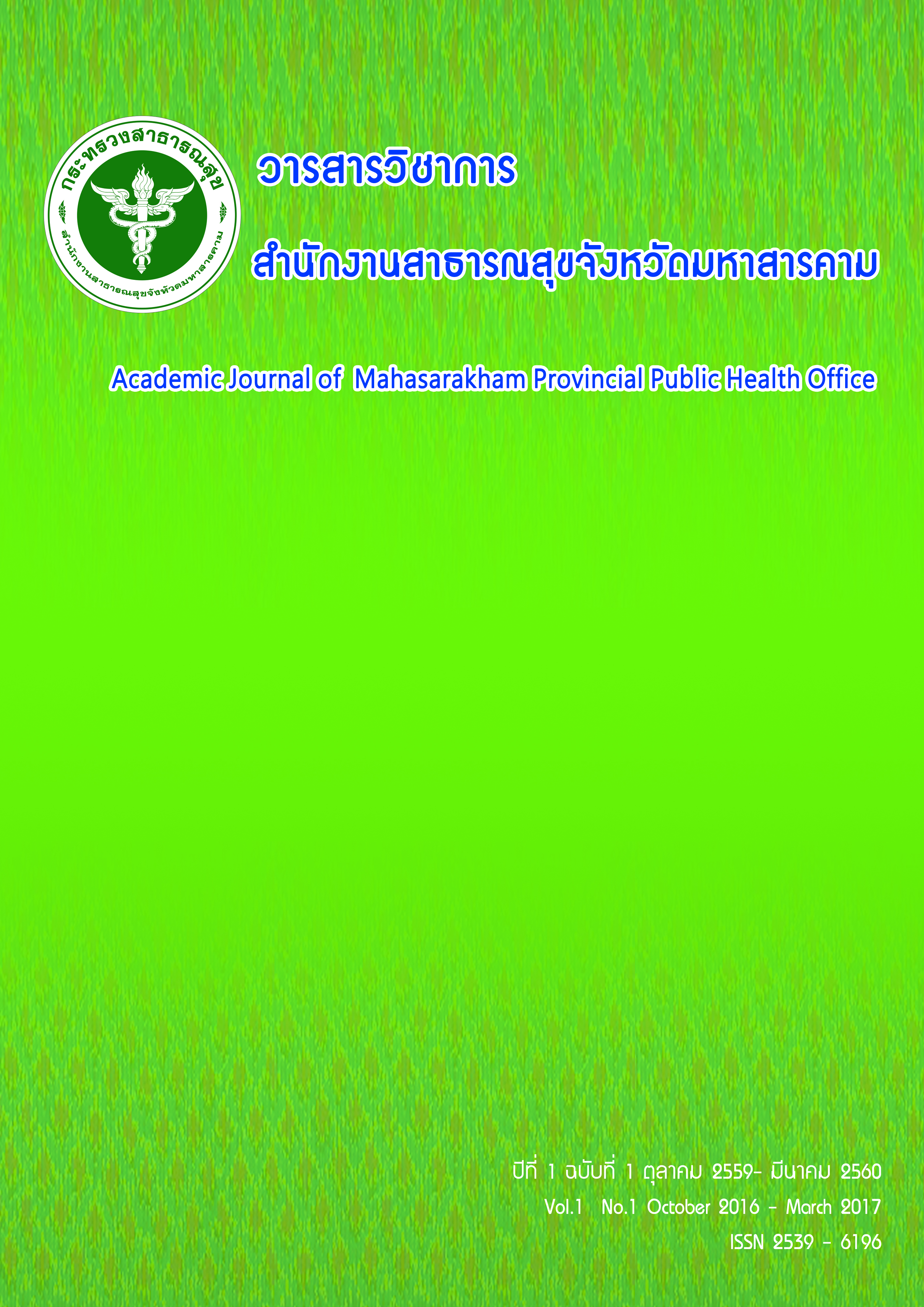The result of Development the system for care giving of the continuity of care the Long Term Care patients type 3 and type 4 at Mueang Bueng Kan District, Bueng Kan province
Abstract
Abstract
This research study have objective aims 1) To study the result of the development system for Continuity of care. 2) To compare the average value of Home visiting value for the Long Term Care patients type 3 and type 4, pre and post-development the system. 3) To compare the average value of the intervening side effects of the Long Term care patients type 3 and type 4 of Bueng Kan Hospital during the period of pre and post development the system, by study the data from all of the population patients type 3 and type 4 who have been registered for the Long Term Care program in the fiscal year 2016 Total 97 patients. Data collection for pre-development the system were conducted 1 October 2015 - 31 March 2016, by using Long Term Care program to keep the data recorded by the researcher Tools used the Computer program Long Term Care , data analysis by using Descriptive statistic systems, such as Percentile, Average value, and Standard Deviations. Statistic use for the hypothetical test were Dependent Sample t-test. The result of study found that there were the Dependent System for Care giving for the continuity of long term care patients in Mueang Bueng Kan district, by established the center for continuity of care (COC) to set up the guideline for taking care the patients and support to lend the tools for develop the information system, and to develop the efficiency / ability of personnel, and care giver/ the networker. The result of comparison of the different average value of home visiting for the Long Term Care patient type 3 pre and post development the system found that the average value of post-development system value were higher statistic significantly (p = 0.029) for the Long Term Care patient type 4 found that the average of home visiting value for the period of post-development of the system were higher, but not statistic significantly. (p = 0.462). The result of comparison of the difference average value of the intervening side effects that occurred in the patients type 3 in the period of pre and post development the system found that the average value of intervening side effects, in the period of post-development the system were decreased statistic significantly (p = 0.016). However for the Long Term Care patients type 4, found that the average value of intervening side-effects were increase, during the post development period but not statistically significant, (p=0.363). Suggestion there should be increasing of the participation from the multiple professional personnel to set up the guideline program for taking care of the patients who have the intervening side effects by using the principle of Case management, and should develop the Care map system for each group of the patients and disease in order to cover all of the treatment and care giving with good quality, more efficiency, worthwhile, and more time saving.
Downloads
Published
2019-07-31
Issue
Section
Original Articles (นิพนธ์ต้นฉบับ)


